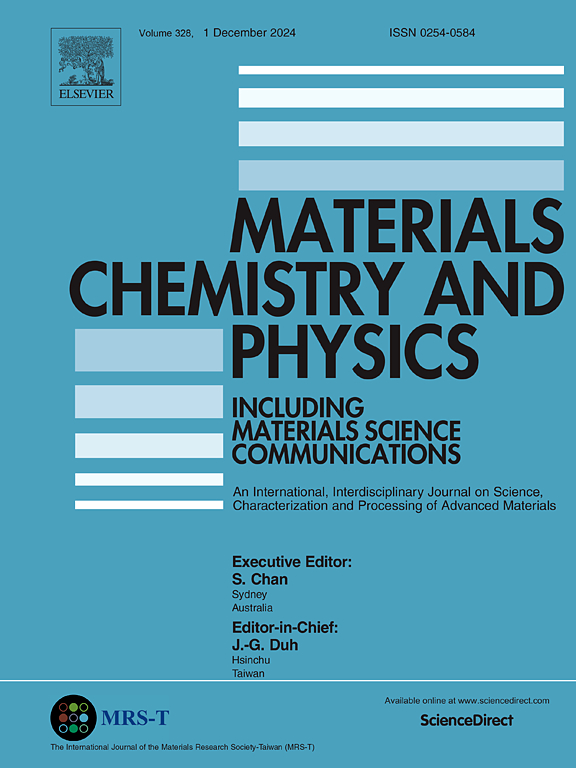Influence of A-site Tb3+ doping on the microstructure, optical and magnetoelectric properties of ErCrO3
IF 4.3
3区 材料科学
Q2 MATERIALS SCIENCE, MULTIDISCIPLINARY
引用次数: 0
Abstract
In this paper, Er1-xTbxCrO3 (0 ≤ x ≤ 0.5) samples were prepared by solid phase method. The effects of A-site Tb3+ doping on the microstructure, optical and magnetoelectric properties of ErCrO3 were investigated systematically. The XRD patterns of all samples are consistent with the orthogonal distorted perovskite structure and belong to the Pbnm space group. Tb3+ ions increased the lattice constant of ErCrO3 sample and reduced lattice distortion and optical band gap. It also leads to a decrease in the concentration of vacancy defects in the parent compound. The anomalous increase of lattice constants at x = 0.1 is related to the creation of vacancy defects, and is confirmed by positron annihilation lifetime spectra and FTIR spectroscopy. The antiferromagnetic transition temperature TN(Cr) and the coercivity field Hc gradually increase with Tb3+ ions, and the peak decrease near TSR, while an exchange bias effect is produced. Dielectric measurements indicate that Tb3+ ions effect the Er–Er and Er–Cr interactions, and the dielectric constants of the sample change with the of Tb3+ doping amount.
本文采用固相法制备了 Er1-xTbxCrO3 (0 ≤ x ≤ 0.5) 样品。系统研究了掺杂 A 位 Tb3+ 对 ErCrO3 微观结构、光学和磁电特性的影响。所有样品的 XRD 图谱均符合正交变形包晶结构,属于 Pbnm 空间群。Tb3+ 离子增加了 ErCrO3 样品的晶格常数,降低了晶格畸变和光带隙。它还导致母体化合物中空位缺陷浓度的降低。x = 0.1 时晶格常数的异常增加与空位缺陷的产生有关,正电子湮灭寿命光谱和傅立叶变换红外光谱证实了这一点。反铁磁转变温度 TN(Cr) 和矫顽力场 Hc 随 Tb3+ 离子的增加而逐渐增大,在 TSR 附近峰值减小,同时产生了交换偏置效应。介电测量表明,Tb3+ 离子会影响 Er-Er 和 Er-Cr 的相互作用,样品的介电常数会随着 Tb3+ 掺杂量的增加而变化。
本文章由计算机程序翻译,如有差异,请以英文原文为准。
求助全文
约1分钟内获得全文
求助全文
来源期刊

Materials Chemistry and Physics
工程技术-材料科学:综合
CiteScore
8.70
自引率
4.30%
发文量
1515
审稿时长
69 days
期刊介绍:
Materials Chemistry and Physics is devoted to short communications, full-length research papers and feature articles on interrelationships among structure, properties, processing and performance of materials. The Editors welcome manuscripts on thin films, surface and interface science, materials degradation and reliability, metallurgy, semiconductors and optoelectronic materials, fine ceramics, magnetics, superconductors, specialty polymers, nano-materials and composite materials.
 求助内容:
求助内容: 应助结果提醒方式:
应助结果提醒方式:


